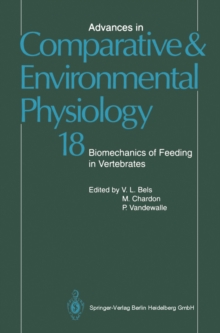
Advances in Comparative and Environmental Physiology : Animal Adaptation to Cold PDF
Edited by Lawrence C.H. Wang
Part of the Advances in Comparative and Environmental Physiology series
Description
When survival is challenged by the cold, animals react by employing both behavioral and physiological solutions.
Depending on the magni- tude of the cold stress and the nature of the adjustment, simple avoidance or sophisticated capacity or resistance compensations may be used.
Thus, migration, shelter seeking, metabolic and insulative compen- sation, torpor, and freezing avoidance and tolerance are successful tac- tics used by diverse groups of animals.
To understand and appreciate the benefits of these tactics, it is necessary to examine not only the well being of the whole animal but also their basic underlying mechanisms.
In ad- dition, it is also of fundamental importance to grasp how seasonal cold affects the survivorship and reproductive success of populations when confronted by a general reduction in primary productivity and an elevated energy cost for maintenance (e. g. in endotherms). In this regard, a synthetic overview which integrates aspects of cell biology, biochem- istry, physiology, neurobiology, behavior, and population biology should be a fruitful approach in providing a holistic understanding on how animals adapt to cold.
The present volume is an attempt to achieve such an overview; its objective is to provide a depth and breadth of coverage that is essential to a full appreciation of animal adaptation to cold.
It is the hope of the contributing authors that this book will serve as an effective reference text for all senior undergraduate and graduate students as well as research scientists with an interest in cold physiology.
Information
-
Download - Immediately Available
- Format:PDF
- Publisher:Springer Berlin Heidelberg
- Publication Date:06/12/2012
- Category:
- ISBN:9783642740787
Information
-
Download - Immediately Available
- Format:PDF
- Publisher:Springer Berlin Heidelberg
- Publication Date:06/12/2012
- Category:
- ISBN:9783642740787










